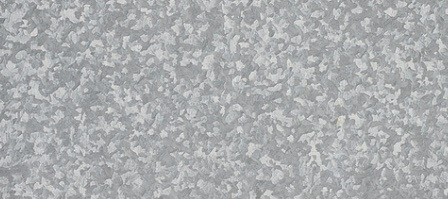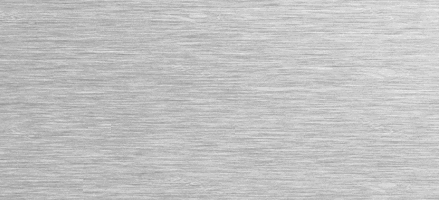STEEL
Choosing the material
Read below where and why we apply the particular materials.
Carbon (or mild) steel adds sturdiness to the structure. Thanks to this quality, the furniture is robust and long-lasting. At the same time, we can have thin frame lines, thus delivering a ‘clean’ and minimalistic look.
Stainless steel has its natural quality to remain shiny and radiant over time, which gives a contemporary appeal. A more rust-resistant AISI316 grade is selected on demand for close to marine and chemically aggressive environments.
Finish options
The surface can be treated in various methods each of them delivering different effects:
- Hot dip galvanized – for maximum protection against rust in open air. A layer of zinc is melted onto the carbon steel, giving a decades-long life cycle to the outdoor furniture. It is maintenance-free and is regarded as the most efficient anti-corrosion solution.

- Powder-coated finish is applied onto the galvanised surface, giving a choice of colours. We offer three color palettes to suit various locations and occasions. The specific RAL color is possible on demand.
- Brushed surface for stainless steel allows for a smooth and uni-directional finish. We use G300 coarse grain for grinding, giving the surface a semi-shiny appearance.

- Bead-blasted is another finish for stainless steel used to obtain a more matte effect than the brushed surface. Microscopic glass beads in high pressure are applied to acquire an opaque and smooth look. The bead-blasted finish also protects against oxidising of stainless steel surface, and it doesn’t fade over time.

WOOD

Choosing type and species of the wood
Wood is outstanding for its appearance, texture and touch. But because it is a nature-originated material, we must sustain its endurance against an open-air environment. Therefore, several precautions for softwood treatment are considered, including drying, planing, and roughening before soaking and covering with a protective substance. Other options for softwood (pine and spruce) are hardwood (iroko)and thermo-treated wood, allowing a nearly maintenance-free service for the latter two.
Below are listed factors for each species or type of wood you might take into account to consider which option is the most suitable for your project.
Softwood Pine and Spruce tree
Coniferous trees are locally sourced, easy to work with and sustainable material. Several factors should be taken into account to maintain its beautiful look and long life span:
- Humidity fluctuations cause wood cracking and wrapping. Generally, it is more as lower its density is. That’s because of empty pores between the cells where the water can freely travel. To reduce the impact of moister, the coniferous tree surface should be protected by appropriate coating.
- The UV rays (sun radiation) over time diminish coating thickness and cause lignin degradation in wood pulp. As more colour pigments are present and less transparent varnish is, more UV rays are reflected away from the timber surface.
- Abrasive and mechanical impacts depend on the intensity of usage of urban furniture. That wears out the wooden coating, exposing softwood to decay.
The Exposed coniferous tree surfaces should be inspected at least once a year and renovated depending on the impact of the environmental factors. Please download the Maintenance instructions on the product pages or watch the video instructions Wood surface restoration guide.
Thermally-treated wood
In thermally-treated wood, organic compounds are removed from the wood cells by heat so it will not absorb water, expand, contract, or provide nourishment for insects or fungi. The high heat in the absence of oxygen produces a naturally durable wood that is permanently resistant to water, insects, and decay. Thermally modified lumber is also more dimensionally stable and less susceptible to warping. When properly maintained, it will not chip, rot, or warp over the years and is rated for 20 years of exterior use.
Thermowood has a rich, deep brown appearance. The colour can be maintained by finishing the wood with UV-inhibitor oil on all sides. If not finished, the wood will naturally weather to a shade of grey because of exposure to the sun’s UV rays.
Hardwood Iroko
IROKO wood is a solid and long-lasting material with a high level of natural oils. Thus, IROKO wood makes a durable seat and picnic table surface. It is close to maintenance-free and able to last for many years.
When delivered, the wood surface of urban furniture is already treated with the oil. It has a deep red appearance, but exposure to sun and rain will gradually give off this red dye and change its colour to silvery grey. It will also slightly roughen the surface. To retain the original colour, the surface should be oiled once a year. Please download the Maintenance instructions on the product pages or watch the video instructions Hardwood-restoration guide.
Materials requiring easy maintenance
These four optional selections of materials ensure the demanding levels of resistance and aesthetics:
- Stainless steel. Traditionally, painted surfaces tend to lose lustre over time, especially bike racks that may acquire scratches. It’ll require repainting and a range of additional upkeep tasks. Anyone who decides on stainless steel will instead find there is minimal maintenance for street furniture to retain its attractive look. Please consult us on choosing steel grade and finish for best results.
- Hot-dip galvanized steel ensures a decades-lasting life cycle even in harsh urban, industrial and next-to-marine environments.
- Thermally modified wood does not absorb or hold moisture, so it can be used for urban furniture, such as bench seats, trash bins, and planters, requiring minimal surface treatment.
- Iroko wood requires no maintenance to retain its mechanical properties.
Regarding thermo-treated wood and Iroko hardwood for eye-catching visual appearance, we advise little maintenance by removing dirt and re-oiling it once it loses the initial look.